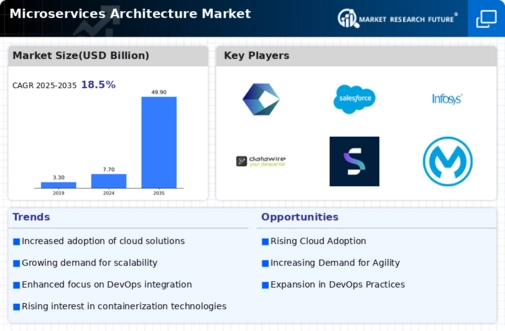Microservices Architecture Market Summary
As per Market Research Future Analysis, the Microservices Architecture Market was valued at USD 7.70 Billion in 2024 and is projected to reach USD 49.91 Billion by 2035, growing at a CAGR of 18.52% from 2025 to 2035. The market is driven by the increasing adoption of cloud-based solutions and the demand for efficient application development. Key trends include the rise of virtualized infrastructure and the preference for hybrid cloud deployments, which enhance operational performance and cost efficiency.
Key Market Trends & Highlights
The Microservices Architecture Market is influenced by several key trends.
- Market Size in 2024: USD 7.70 Billion
- Projected Market Size by 2035: USD 49.91 Billion
- CAGR from 2025 to 2035: 18.52%
- BFSI segment dominated the market in 2021
Market Size & Forecast
| 2024 Market Size | USD 7.70 Billion |
| 2035 Market Size | USD 49.91 Billion |
| CAGR (2024-2035) | 18.52% |
Major Players
Cognizant, Salesforce Inc, Infosys Limited, Microsoft Corporation, IBM, Datawire, Software AG, Mulesoft, Nginx Inc.



















Leave a Comment